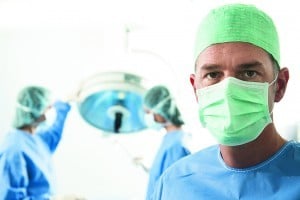The goal of secondary surgical facial enhancement should be to make the patient look better without signalling that something has been done; an unoperated, natural appearance is always the desired outcome. However, for some patients a realistic opportunity for success may be compromised owing to previous procedures. Creating a face that is vibrant, youthful and natural may be more difficult and in some cases, unattainable. Most often, however, secondary aesthetic facial surgery simply requires that excellent surgical and aesthetic judgment and skill be applied, in a routine fashion, to achieve the desired outcome. Though the surgical concepts are the same — whether performing a primary or secondary operation — the timing of intervention, choice of technique, and need to address aesthetic issues created by previous procedures makes secondary facial aesthetic surgery unique.
Initial consultation and assessment
The initial patient consultation is an important first step in establishing a strategy for success. For patients presenting for secondary facial surgery, the tone of the discussion may be influenced by previous experience, which may have been negative. Remember that it is often uncomfortable for the patient to discuss his/her concerns, especially if they were unhappy with their initial cosmetic surgery. As with primary surgery, when discussing secondary procedures, the patient’s motivations and desires remain paramount to the discussion.
To guide your assessment, a number of issues should be considered that make a secondary consultation unique. In addition to your routine aesthetic assessment, the following should be clarified:
- ■ If you were not the initial surgeon, what are the reasons the patient is not returning to that physician?
- ■ What exactly was done for the patient?
- ■ Does the patient feel that their initial concerns were satisfactorily addressed? Were they happy with the results?
- ■ When was the previous surgery?
- ■ Is secondary surgery intended to be corrective of primary surgical intervention or a separate aesthetic issue altogether?
- ■ Were the incisions used appropriate for your purposes?
- ■ Was the previous experience positive? If not, your pre-operative discussion must not only educate the patient, but may also have to debunk any preconceived notions.
Understanding the patient’s satisfaction with their previous surgical experience provides insight into their expectations and ability to achieve happiness from aesthetic surgical enhancement. It is important to keep in mind that as cosmetic surgeons, though we operate on the face, our ultimate goal should be to improve our patients’ inner sense of wellbeing. For some individuals, though they are focused on improving their external appearance with the hope of improving their self-esteem, their problems are more than skin deep. Ideally, these patients are identified during the initial consultation and are guided in a different direction rather than towards secondary surgery.
Pre-operative considerations in secondary facial rejuvenation
Be sensitive to the general ageing of the patient. If the body and hands look very old, facial rejuvenation may create aesthetic disharmony and these observations should be discussed. This may be particularly relevant in secondary surgery patients as they are often older individuals. Another consideration should be the general health of the patient. Even if a patient has significant aesthetic issues that are amenable to surgical correction, under no circumstance should you suspend your good medical judgment and be pressured to operate on a patient unless he/she is medically sound. The good news is that the risk of post-operative complication from facelift procedures are similar in patients older than 75 years compared to a younger cohort, when matched for American Society of Anesthesiologists (ASA) physical class. In properly selected patients who are active and whose ASA class is either 1 (a normal healthy patient) or 2 (a patient with mild systemic disease), a facelift is just as safe in older individuals as it is in middle-aged patients1.
To reduce the risk of complications there are issues that must be addressed before surgery. As haematoma formation is the most common complication of facelift surgery, with a reported incidence of between 1% and 15%2–8 and has been correlated with a pre-operative systolic blood pressure above 150 mmHg9, it is paramount that the patient’s primary care physician control their blood pressure well before the planned procedure. Since antihypertensive medications are frequently prescribed in the age group of patients seeking secondary rhytidectomy, it is important to counsel them to take their medications the morning of surgery with a small sip of water, and to have the medications with them for after surgery. Additionally, aspirin, non-steroidal anti-inflammatory drugs (NSAIDs), vitamin E, ginko biloba, ginseng, and garlic and ginger supplements have all been shown to have adverse clotting effects and are to be avoided for 2 weeks before and after surgery10.
The use of tobacco products causes a 12-fold increase in the risk of skin flap necrosis11. To reduce this risk, all tobacco products (including nicotine patches) must be stopped for a minimum of at least 2 weeks before and after surgery. Even with smoking cessation, the incidence of skin flap necrosis is still higher in previous smokers when compared with those who have never smoked12 and this must be explained to the patient pre-operatively. Furthermore, a complete medical history must be obtained before surgery to identify conditions that may negatively impact the patient’s post-operative course, such as Raynaud’s disease, which has been correlated with skin flap necrosis14 and Ehlers-Danlos syndrome, which predisposes to widened scars. Finally, a detailed discussion of the risks of surgery must be reviewed with the patient, even if they have had the procedure before.




